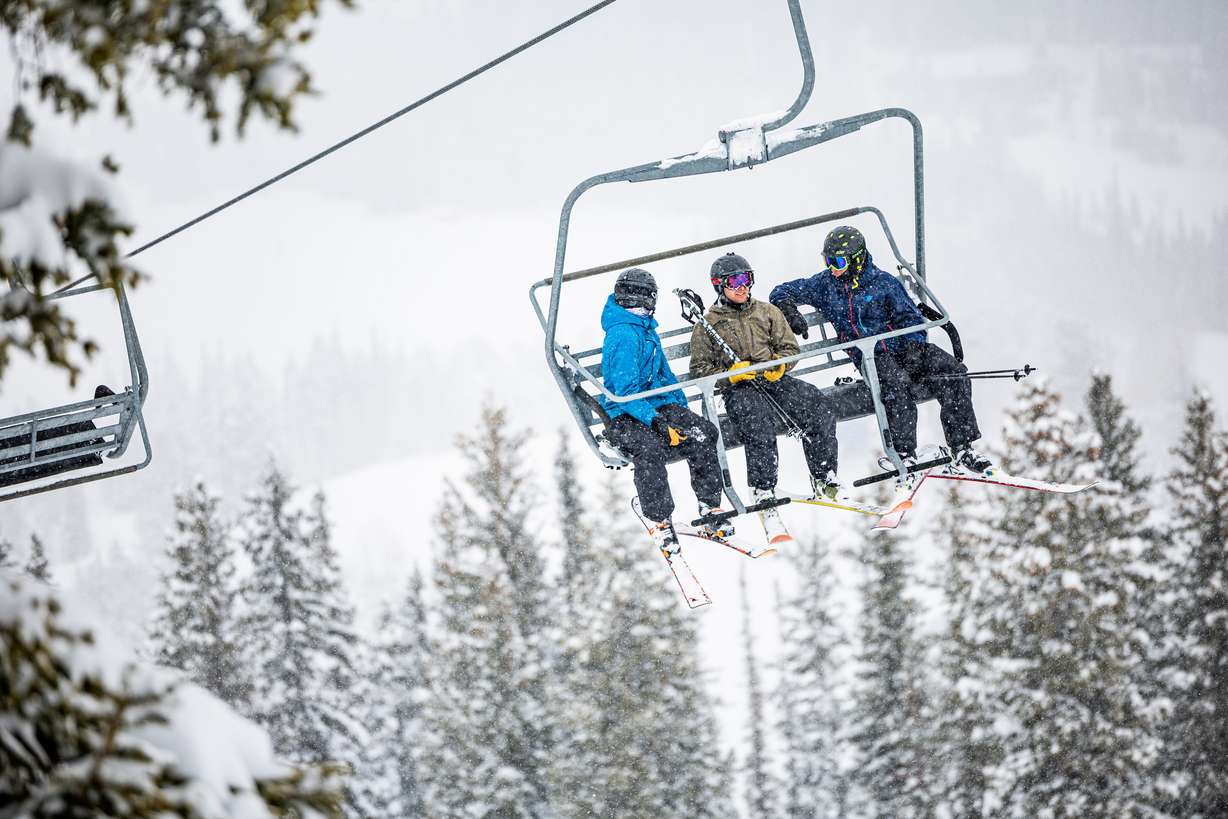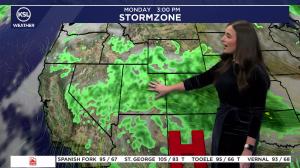Estimated read time: 3-4 minutes
- Alta Ski Area surpassed 400 inches of snowfall, becoming Utah's first resort to do so this year.
- Only Alyeska Resort and Mt. Baker Ski Area have higher snowfall totals this season in North America.
- Utah's snowpack gained 1.3 inches of water since Wednesday, reaching 95% of the median average after the latest storm.
SALT LAKE CITY — Alta Ski Area surpassed 400 inches of snowfall this season after receiving more than 2 feet of snow in the latest storm, which was beginning to clear out Friday afternoon.
The total 404 inches — as of noon Friday — is still half of the record-breaking total set two years ago, but it's a significant mark few North American resorts have reached this season.
"(Alta) becomes the first Utah resort and third resort in North America to pass 400 (inches) of snow on the season," Utah Daily Snow, a section of the snow-forecast company Open Snow, noted on Friday.
Only Alyeska Resort in Girdwood, Alaska, and Mt. Baker Ski Area in Whatcom County, Washington, have higher totals this season, based on available information. Alyeska has collected 539 inches of snowfall this season, leading all resorts on the continent, while Mt. Baker's estimate was just ahead of Alta on Friday.
The latest round of moisture was good for other resorts in the state, along with the ever-important snowpack, KSL meteorologist Matt Johnson said. Brighton, Deer Valley, Eagle Point, Snowbird, Solitude and Sundance resorts reported receiving close to or over 2 feet of snow since Wednesday, while some mountain sites tracked by the Natural Resources Conservation Service gained over 3 feet of new snow.

A cold wave that passed through Thursday night also helped low-elevation areas pick up some snow. Fillmore led the way with 10 inches, while some valley, bench and mountain backcountry communities also ended up with at least a half-foot of snow from the storm. Even parts of the Wasatch Front received 3-4 inches of snow, exceeding initial valley snowfall exceptions.
A snowpack boost
State water managers are about as thrilled with the storm's productivity as skiers and snowboarders.
Utah's average statewide snowpack gained 1.3 inches of snow-water equivalent, or the amount of water in the snow, between Wednesday and Friday afternoon, per Conservation Service data. Its running total of 12.2 inches on Friday was 95% of the median average for this point in the season and 76% of the seasonal average.
The current total is now higher than both the 2021 and 2022 seasons. However, it's also 3.7 inches below where it was at this point last year and 8.9 inches below its level during the record snowpack season two years ago. Alta surpassed 900 inches of snowfall that year.
Meanwhile, the Great Salt Lake snowpack basin, which includes a handful of basins across Utah's northern half, gained 1.5 inches of water since Wednesday, rising its running total for the year to 107% of the median average for this point in the year. Central and southern Utah sites also received a welcomed boost, lifting running totals past 80% across many central Utah sites, but many southern Utah sites remain at less than 50%.
Utah's snowpack vs. the West
New federal data also shows where Utah snowpack basins rank compared to others across the West, which also explains why Alta is one of the snowiest resorts in North America.
The state's snowpack divide has been tied to the La Niña oceanic pattern this past meteorological winter. The National Oceanic and Atmospheric Administration released new data on Thursday, which essentially shows the path of many storms outside of Utah.

Northern California and southern Washington — as well as most of Oregon, Nevada, Idaho, Montana and Wyoming — have also had a productive snowpack this year. Lesser totals are found in central California and northern Washington, as well as central and southern Colorado. About all of Arizona and New Mexico's basins had running totals below 30% of the median average at the start of March, including some at or near 0%, showing how dire things are in the Southwest.
Forecasters warned it would likely have impacts on the Colorado River Basin. Lake Powell inflows, for instance, were on track to be 70% of normal between April and July, as of the Thursday report. The reservoir by the Utah-Arizona border is currently just 34% full, so it likely won't enjoy the same boosts it received the past two winters.









